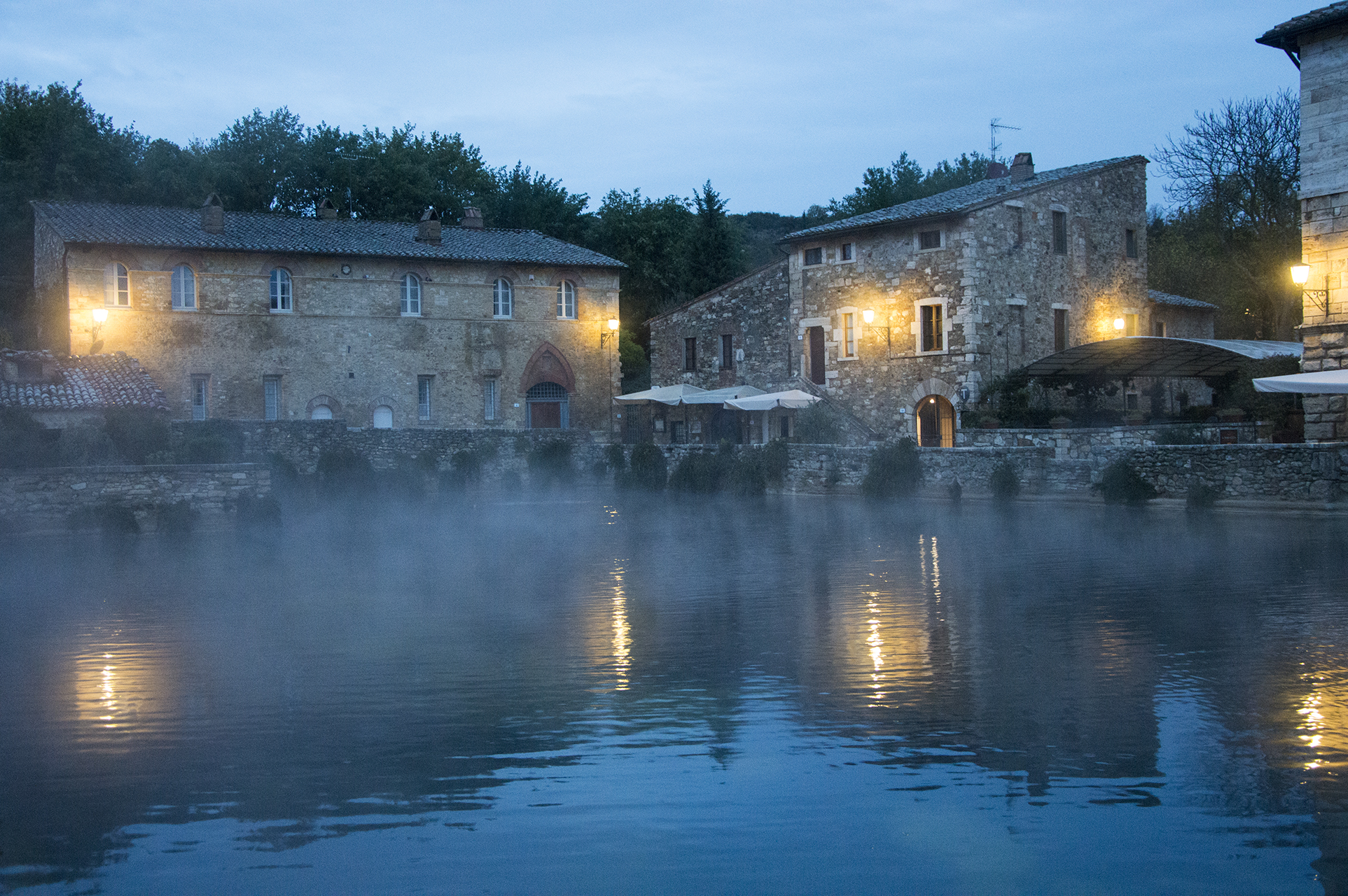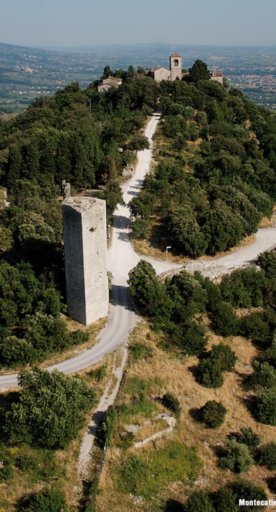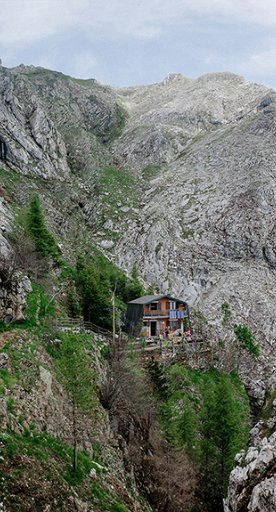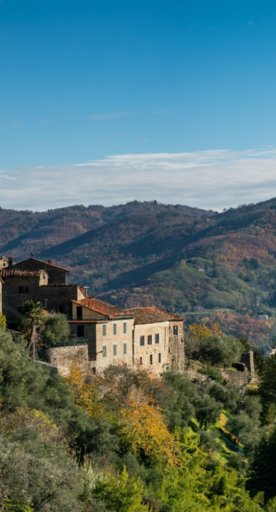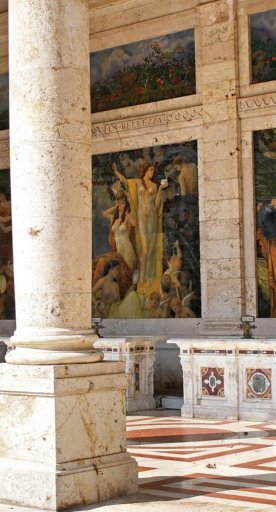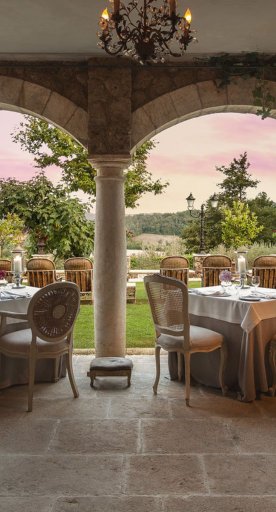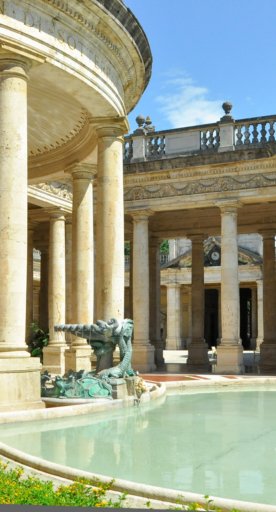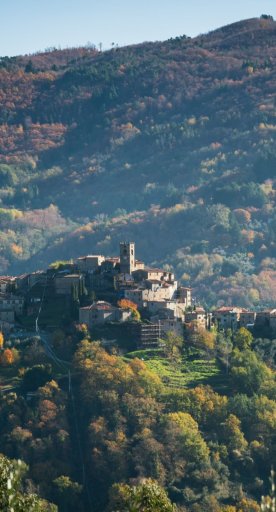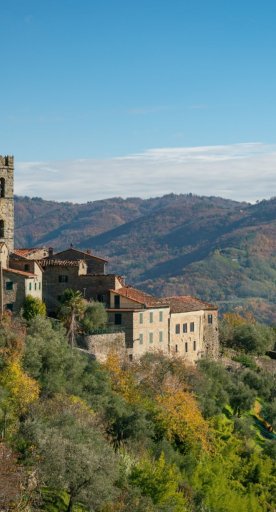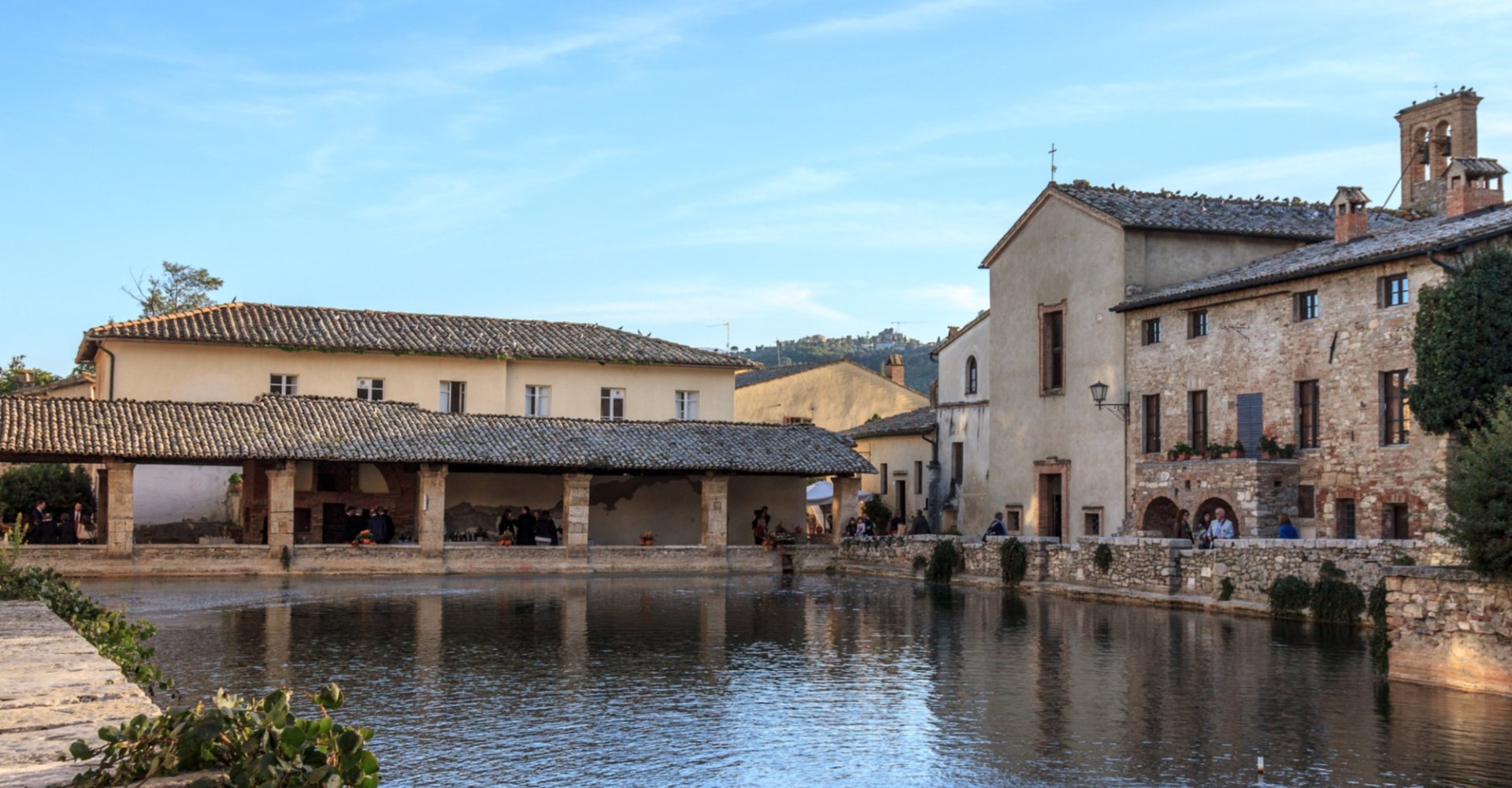
The historic thermal spas of Tuscany
Not just relaxation but a dive into history thanks to the hot springs
Maybe you don’t need a good reason to indulge in one of Tuscany’s many thermal spas, encompassing hot springs and therapeutic waters, enchanting scenery, massages and much pampering, relaxation, healthy cuisine ... but maybe there really is one excellent reason!
In fact, some thermal spas are also worth visiting for their natural, historical or artistic value.
Here’s our list!
-
1.Terme Tettuccio in Montecatini Terme
-
2.Grotta Giusti in Monsummano Terme
-
3.Bagni di Pisa
-
4.Bagno Vignoni
Terme Tettuccio in Montecatini Terme
Montecatini Terme’s waters were exploited as early as Roman times, but it was in the 15ᵗʰ century that the first establishments were founded, including what would become the famous Tettuccio.
Restored by Cosimo I de’ Medici and later by Grand Duke Leopold II, it marked the true birth of the spa town.
The Tettuccio, a symbol of Montecatini Terme, was rebuilt in 1928 by Architect Giovannozzi. The Monsummano travertine façade, Carrara marble statues, large colonnades, frescoed rooms and gardens with centuries-old trees still tell of the timeless elegance of this place.
Montecatini Terme remains one of the most popular destinations for those seeking relaxation, wellness and the refined atmosphere of the Belle Époque.
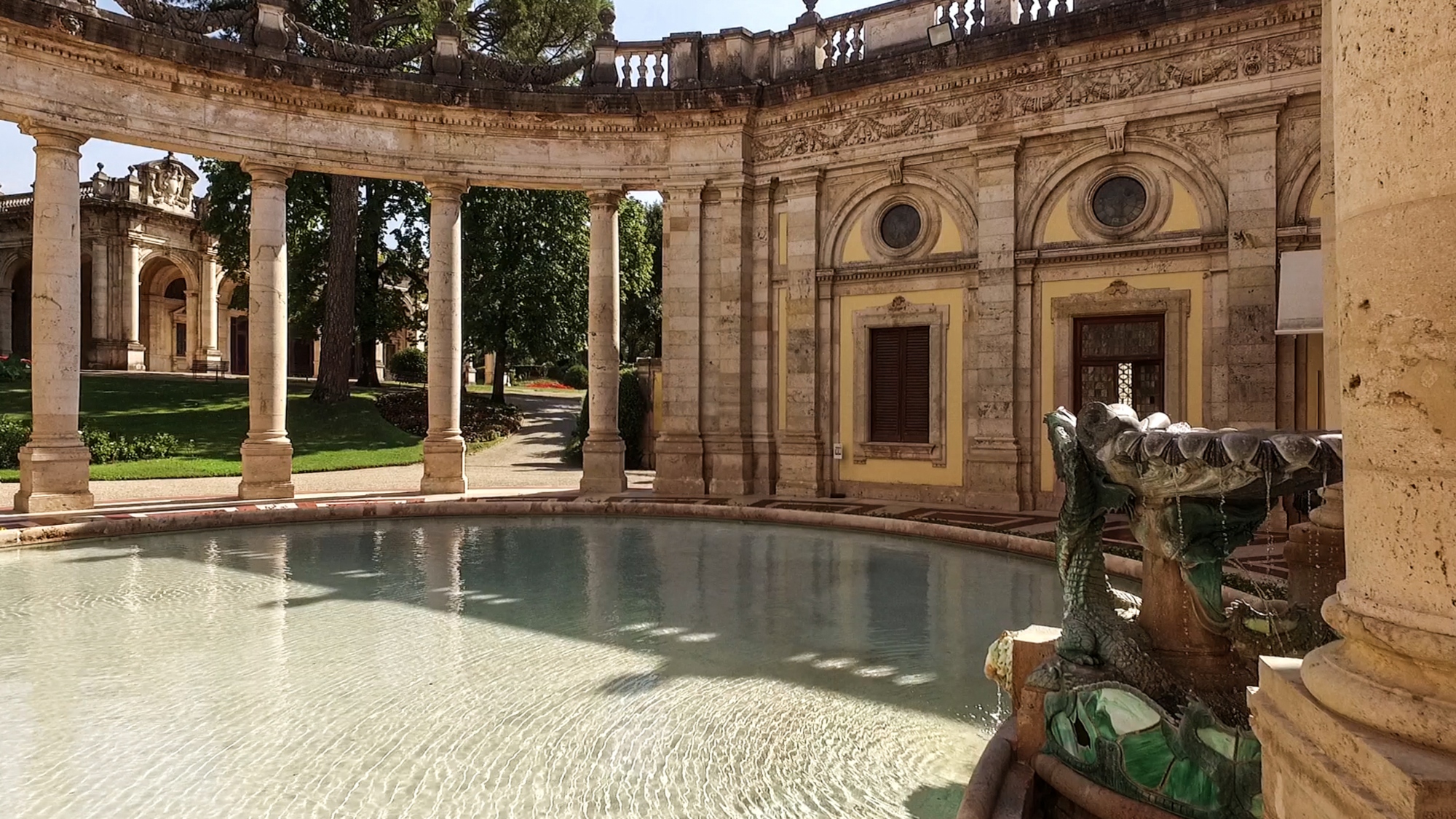
Grotta Giusti in Monsummano Terme
Discovered by accident in 1849, the Grotta Giusti extends more than 656 feet or 200 meters underground among stalactites, stalagmites and natural vapors. Giuseppe Verdi called it the “8ᵗʰ wonder of the world,” and even today, it offers unique delights in the 3 environments that evoke Hell, Purgatory and Paradise, with temperatures ranging from 75 °F (24 °C) to 93 °F (34 °C), creating an authentic natural Turkish bath.
At the bottom of the cavity lies a clear pool of 97 °F (36 °C) thermal water, which releases a beneficial steam capable of enveloping the body in a natural, healthy and detoxifying sauna.
For the more adventurous, it is also possible to dive into the waters of the grotto, accompanied by experienced instructors.
Outside, in the century-old park surrounding the 19ᵗʰ-century villa that once belonged to the Giusti family, there is now an elegant resort with a large 95 °F (35 °C) thermal pool with scenic waterfall and whirlpools completing the experience.
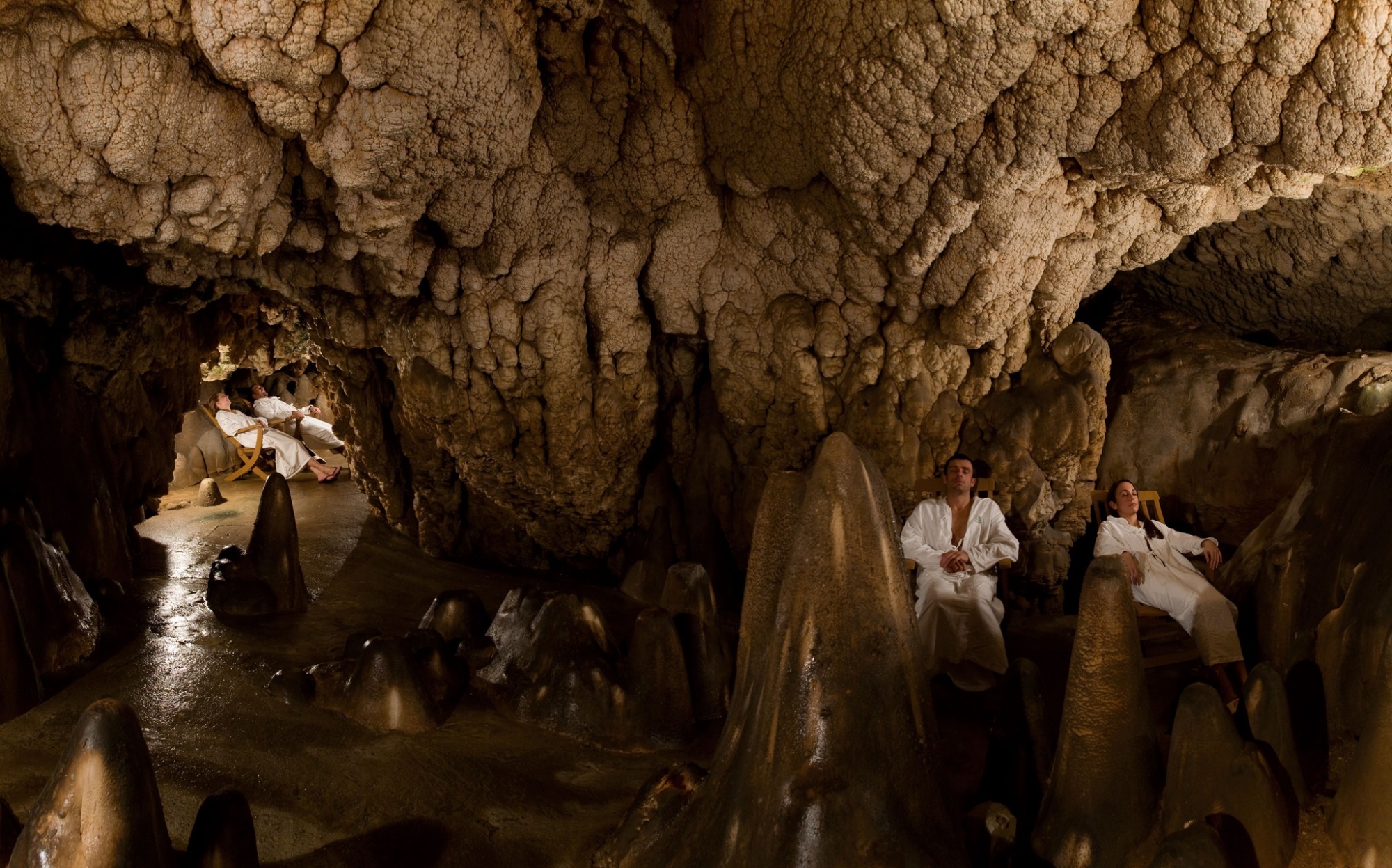
Bagni di Pisa
Is this really where Mary Shelley imagined up her Frankenstein? Legend has it ... Certainly the writer was among the many illustrious guests who frequented the thermal baths, along with Pauline Bonaparte, Vittorio Alfieri, Carlo Goldoni, the princes of England and sovereigns such as Swedish King Gustavus Adolphus and George IV (King of the United Kingdom of Great Britain and Ireland and King of Hanover).
Already appreciated by the Etruscans and Romans, the waters became famous in 1743 when Francis I, Holy Roman Emperor and Grand Duke of Tuscany, turned the establishment into his summer residence, transforming it into a refined European salon.
The Bagni di Pisa still retain the elegance of an 18ᵗʰ-century palazzo, with frescoed ceilings, terracotta floors and marble decorations that hark back to the atmosphere of its most sumptuous season.
Inside, the spa routes are divided between the Bagni di Levante dedicated to traditional cures, and the Bagni di Ponente, where Eastern and Western traditions intertwine in environments rich in colors and extracts.
Here, indoor and outdoor pools, inhalation treatments, mud baths and wellness rituals alternate, capped by a rooftop pool that opens onto the green parkland.
Not far away, the Grotta dei Granduchi guards a natural cavity carved into the rock, with a stone tub and seating providing an intimate and rejuvenating steam bath. The waters flow from the Monti Pisani at 100 °F (38 °C). Rich in calcium, magnesium and bicarbonate, they possess relaxing and anti-inflammatory properties that are also beneficial for the respiratory tract.
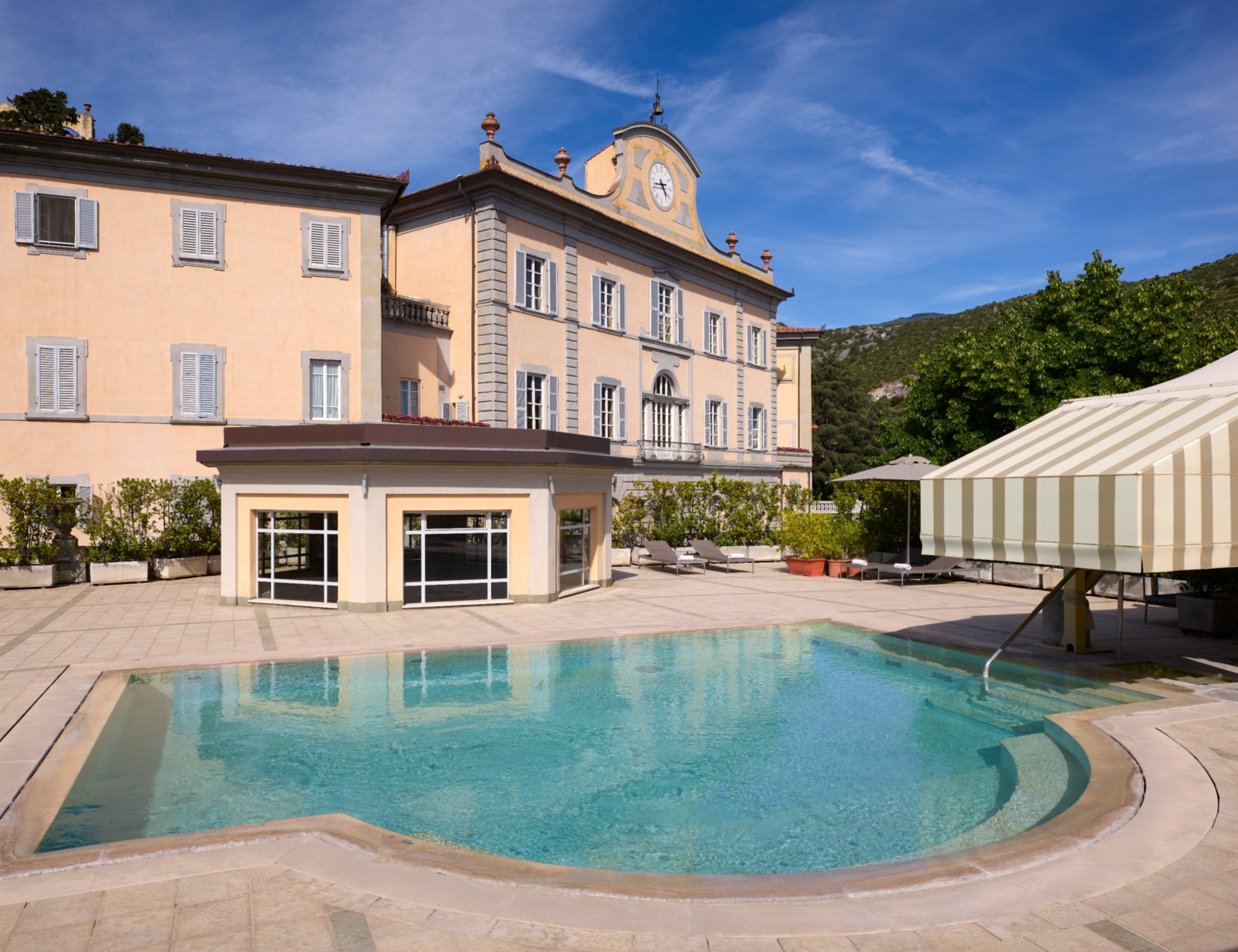
Bagno Vignoni
In the heart of the Val d’Orcia, Bagno Vignoni delights with a truly unique square. Instead of the traditional cobblestones, a large rectangular pool opens up in the Piazza delle Sorgenti, from which flow hot waters exploited since antiquity. Etruscans and Romans already appreciated their healing properties while in the Middle Ages, illustrious figures such as Saint Catherine of Siena and Lorenzo de’ Medici stayed here.
The water, which gushes out at about 120 °F or 49 °C, was also once used for therapeutic mud-balneotherapy treatments.
While it is no longer possible to soak in the central pool today, the spectacle of the vapors that envelop the stone edges at sunset provides a timeless atmosphere.
The thermal wellness continues in the village’s modern establishments: the Terme Spa & Resort that overlooks the square, the Terme Hotel La Posta with indoor and outdoor pools overlooking the panoramic views of the Val d’Orcia, and the Terme Hotel Adler where you can relax in the atmospheric Grotta Salina enriched with Dead Sea salts.
Whether it is to relax by soaking in the warm waters and benefit from their healing properties or to discover unique villages and landscapes, each stop is an invitation to slow down and restore harmony.
A journey through centuries of traditions, lush nature and timeless beauty.
